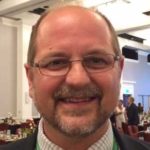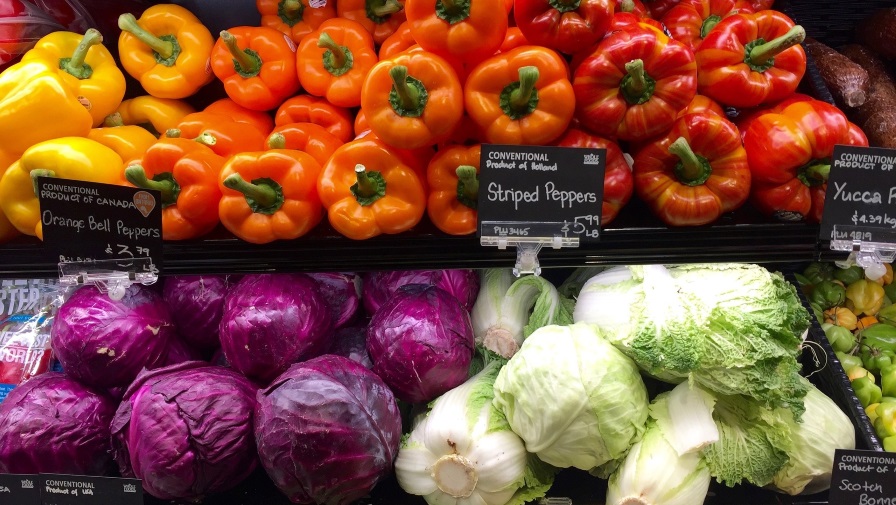Taking Stock of Florida Citrus After the Storm

Despite Hurricane Irma’s eastern eyewall passing not far from Blue Heron Nurseries in Winter Garden, the facilities there thankfully sustained no damage.
Photo courtesy of Blue Heron Nurseries
Hurricane Irma dealt a devastating blow to Florida’s citrus industry. Nurseries were no exception, with many suffering structural damage, power failures, and damage to tree inventory. During such situations, it can be difficult to rise above the loss and frustration and recognize systems functioning at an uncommonly high level. Such was the case with the public/private preparatory storm plan developed by Florida Department of Agriculture and Consumer Services’ Division of Plant Industry (FDACS-DPI) and Florida Nursery, Growers and Landscape Association (FNGLA) to help the nurseries prepare and recover.
Prior to the storm, DPI distributed the following message through FNGLA’s Citrus Nursery Division network:
“Under our authority, we recognize the possible devastation that Irma could have on our citrus nurseries. As such, we are allowing nurseries to remove their roofs if they feel it will help them to save the structure. We urge nurseries to consider this as a last possible resort, but want to make sure that they have every option available to them. We have come up with a list of SOPs (see below) that should be followed in this event. Nurseries also must recognize that this could have a long-term impact on their scion trees from being exposed. That being said, we are here to support the industry in any way possible.”
Nursery Suggested Protocol for Weather Events
1. Ensure you have enough supplies on hand to make quick repairs and chemical applications (i.e., extra plastic, screen, chemicals, etc.).
2. Before a storm, apply some type of systemic product to protect trees in the event of exposure.
3. One or two days before a storm, apply a type of fungicide that has residual activity to prevent canker spore penetration as much as possible.
4. After the storm and as soon as safely possible, make any necessary repairs and again apply some type of fungicide that has residual activity to decrease the amount of canker incidence.
5. Once greenhouse repairs have been made, a follow-up insecticidal spray would be recommended.
6. Start continuous in-house daily inspections and call FDACS Citrus Nursery Inspection if something is suspect.
7. Nurseries should keep accurate records of any and all pesticide and fungicide applications made before and after the storm.
Helping Hands
All too often, government agencies are viewed as the “Big Brother” enforcer and stakeholders hate to see them coming. What we often fail to recognize is how properly managed state agencies can be a lifeline for agricultural business, helping keep markets open and product flowing. In the case of Hurricane Irma, FDACS DPI’s Trevor Smith, Ben Rosson, and Justin Ezell emphatically stated they and “DPI will do anything necessary to weather this storm. We will make it through together.”
Ben Bolusky, FNGLA CEO, recently reminded us, “FNGLA-member citrus nurseries enjoy a strong working relationship with DPI. Frankly, DPI is an exceptional partner.”
Individual nurseries have echoed the same sentiment that DPI was a strong partner when preparing for the storm. DPI was on the job immediately following the storm to assess damage and determine what could be done to help ensure the movement of undamaged nursery inventory.
Stepping Up Supply
Recovery of Florida’s citrus industry rests upon the ability of nurseries to supply trees to growers. Relative to citrus nurseries, DPI has a regulatory responsibility. DPI takes this responsibility seriously, but it also is willing to consider adjustments and changes to provide needed relief and enable nurseries the freedom to operate.
It has been echoed many times in my articles: Citrus nurseries are the point of the spear when it comes to Florida’s ability to restore supply. It all starts with the availability of high-quality citrus trees.
Case in point, Florida statutes require all citrus nursery stock be produced in a protective structure approved by FDACS.
Hurricane Irma created emergency conditions jeopardizing the movement of citrus nursery stock in damaged or compromised structures. Understanding the necessity to maintain availability of new trees for replanting and resets, an extraordinary solution was needed. Working closely with FNGLA and its member nurseries, DPI quickly finalized an Emergency Rule (effective upon filing) which:
- Allows damaged or potentially exposed citrus stock to be moved to a separate growing structure and grown out for sale to citrus producers for planting.
- Calls for purchasing producers to sign an acknowledgement that the nursery stock was potentially exposed to citrus diseases.
- Requires nurseries to track the movement of all nursery stock to non-certified structures.
- Requires that damaged structures must be repaired, sanitized, and inspected for certification in accordance with Chapter 5B-62, FAC.
- Encourages nurseries with scion houses damaged by Hurricane Irma to restart from (Florida Foundation Seed Producers) material as soon as possible. However, recognizing the shortage that destroying this material could cause, the Division will require testing quarterly and continuous inspection every 30 days of these trees for one year beginning Sept. 30, 2017.
Through this effort, trees can be made available and nurseries are provided a workable path for recovery.
Winston Churchill was quoted as saying, “It is not enough that we do our best. Sometimes we must do what is required.” Indeed.










